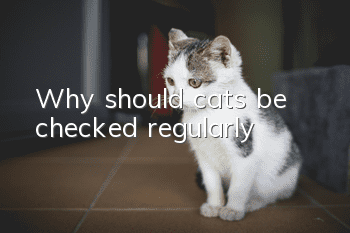Seven tips for bathing cats (suitable for new parents to learn)

For pet cats that do not participate in competitions, if they are in good health, they can take a bath once or twice a year, because the cat's usual self-grooming is enough to meet its hair maintenance needs.
However, if it is a family that plays games, especially long-haired breeds, the frequency of washing and care will be 1-2 times a week. At the same time, you need to develop a targeted washing and care routine based on the cat's hair condition.
Focused care during the cat's early life, especially during the imprinting behavior period, will help the cat establish lifelong good habits, which also includes the habit of bathing.
However, some parents may have read my article "What is the right way to cook during the cat's imprinting period (2-7 weeks)?" and later discovered that their cat is actually several months old, or even how old it is. .
Taking a bath is still a problem. So, this lesson gives some tips to minimize the cat’s uncooperation during the bathing process.
01. Choose an “auspicious day” to wash it
If you only bathe your cat occasionally (for example, once or twice a year). Then choose a sunny summer day with suitable temperature to bathe the cat, so that the cat can dry quickly even if there is no drying equipment.
Of course, you can stay and take care of your pet, but it is not recommended.
02. Do not "submerge" a cat that is not used to bathing with water directly
Most cats will not object if their fur is slowly wetted. But if you directly put its body into a neck-deep basin or bathtub, it is likely to object strongly.
Therefore, the correct approach is: first put the cat in a sink without water, then slowly spray the hair with a weak sprayer, and then slowly pour some water into the sink. Wash little by little, tentatively.
The above is just a try for cat parents who seldom bathe and hate bathing. I got used to it when I was a kid, just wash it.
03. Wet your head at the end
Back first, then head last. Most cats are very sensitive to their heads. Once water enters the ears, nose, or even mouth, it may cause the cat to become agitated and panic.
04. Control of water temperature
The water temperature should not be too high or too low. It should be maintained between 38 - 40 degrees Celsius. Generally, you can use your own hands to test the water. What do you think of the water temperature?, it is suitable for you to use to bathe yourself. Then it shouldn’t be a big problem for cats.
It is recommended to install a thermostatic water valve. If the water temperature is not properly controlled, it is likely that the cat will never dare to take a bath next time.
05. Choose a mild shower gel
Shower gels with irritating and strong smells are not recommended. It is best to choose products that are unscented or have a low odor.
There are many shampoo products used by people, which are actually suitable for washing cats. I don’t know how many times better than those inferior cat shower gels.
The most common example is Johnson & Johnson Baby Shampoo.
For greasy hair, DAWN dishwashing detergent is a better alternative to oil-removing shower gel. But it is not recommended to use this every time you take a shower. Always assess the condition of your cat's coat before bathing.
06. Post-bath reward
After taking a bath, giving the cat appropriate rewards is the easiest way to encourage the cat to regard bathing as a "good thing".
Stroking its body, touching its chin, giving some nutritious ointment or dried fish may all work. Sometimes, you can even give the cat delicious food while taking a bath. Some cats are so big-hearted.
07. Try to dry the hair as much as possible after bathing
Compared with the bathing process, what gives parents more trouble is blow-drying them. Many cats will struggle desperately when the wind blows, trying to escape, and sometimes even run around the house. Many parents have been scratched by cats because of this, so be careful!
- Why does the Ragdoll cat not eat well? Is it a picky eater?
- What does it mean when a cat steps on milk?
- How long does it take for a cat to get used to a new environment?
- Can cats eat watermelon? What are the advantages and disadvantages?
- Why do Ragdoll cats like to bite people? How to prevent Ragdoll cats from biting people?
- Why does cat poop smell so bad? Analysis of the reasons why cat poop smells so bad!
- Are Siamese cats suitable for novice owners?
- What should I do if my new cat keeps meowing at night?
- What does a cat stretch mean?
- Do all cats eat cat grass? (What are the benefits of cats eating cat grass?)



